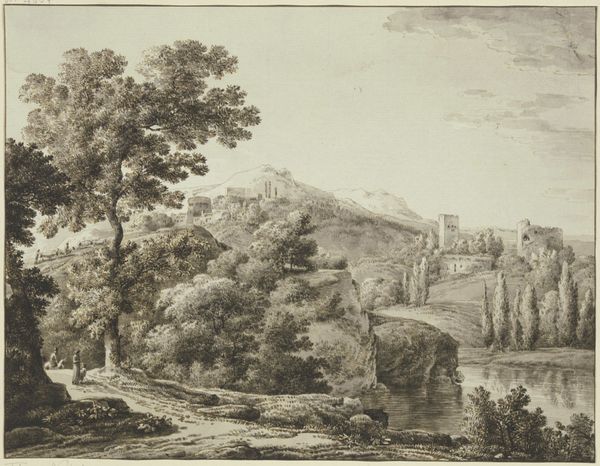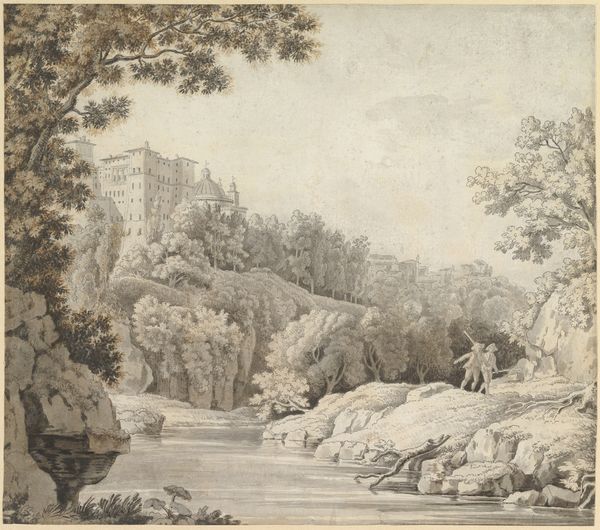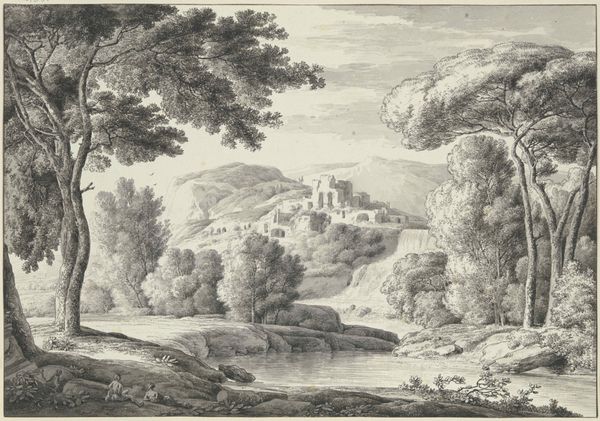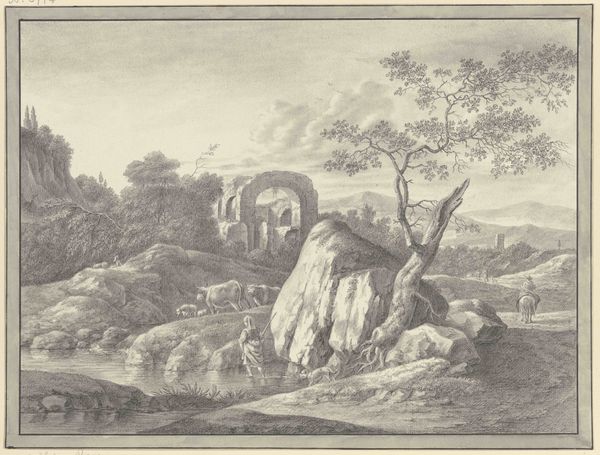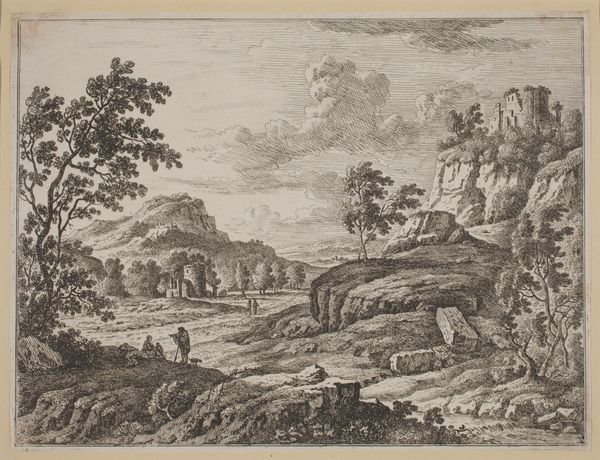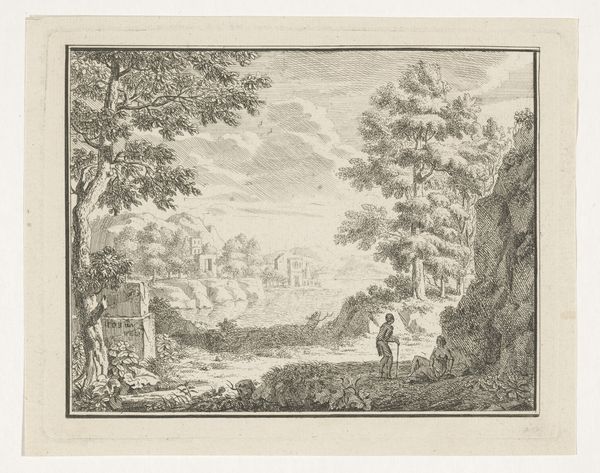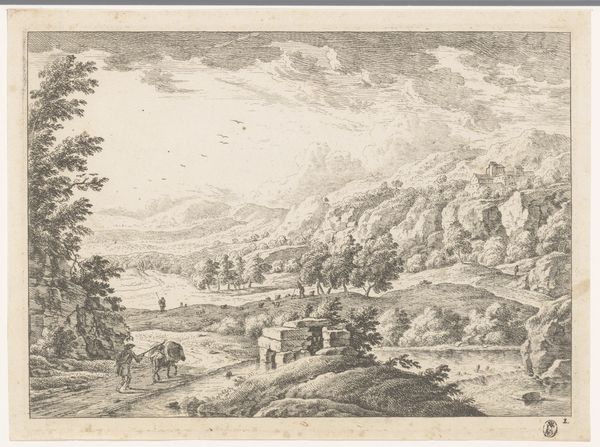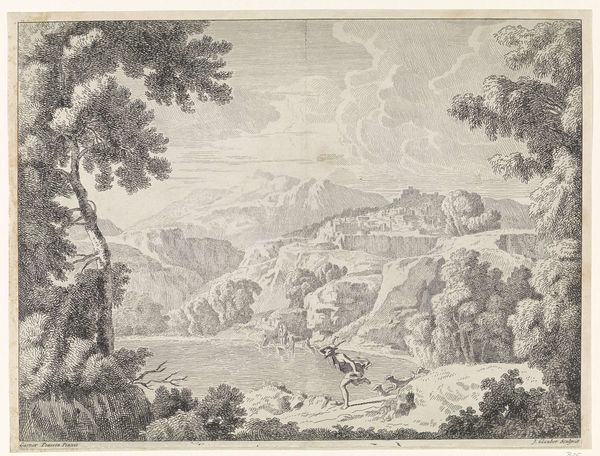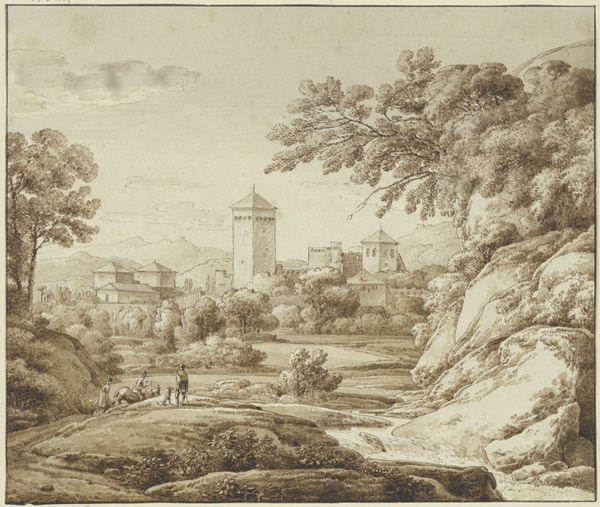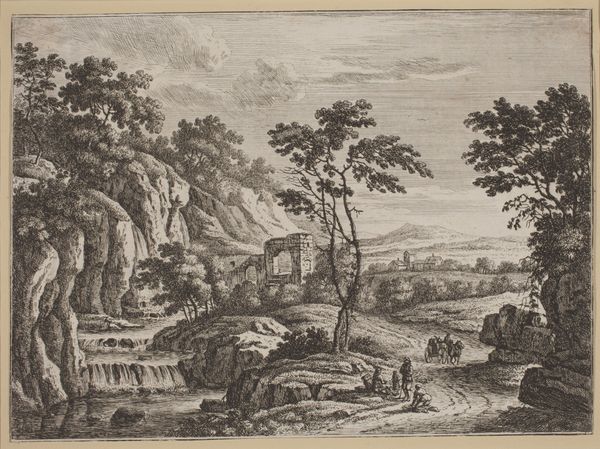
Ideal Landscape with a Shepherd and Cows 1770 - 1824
0:00
0:00
drawing, print, pencil
#
drawing
# print
#
landscape
#
pencil drawing
#
romanticism
#
pencil
Dimensions: sheet: 7 3/8 x 10 13/16 in. (18.7 x 27.5 cm)
Copyright: Public Domain
Editor: We’re looking at "Ideal Landscape with a Shepherd and Cows," a pencil drawing made sometime between 1770 and 1824 by Johann Christian Klengel. It's such a serene image, with the cows and the distant castle… What do you see in this piece? Curator: Well, immediately, I see a negotiation of power. Consider the visual language: crumbling architecture perched atop a formidable cliff face versus the gentle curves of the grazing cattle and the diminutive figures of the shepherd and his animals. The decaying structure alludes to a lost era, a fallen authority. The image subtly speaks to how nature reclaims and reshapes even the most imposing human constructions over time. Editor: That's a very interesting way to see it. I was more drawn to how picturesque it is – almost like a scene from a fairytale. Curator: Fairytales also work through cultural memory. But observe how Klengel employs light and shadow, manipulating the contrast to evoke a certain emotional resonance. The softer light upon the animals evokes innocence. And note the distant hazy castle which inspires curiosity. Why do you think the artist uses such distinct renderings of different parts of the landscape? Editor: Perhaps to show the different scales of life—the eternal strength of nature versus the ephemeral creations of people. Curator: Precisely! And beyond just scale, the artist is interested in how a viewer processes and interprets this kind of seemingly familiar scene. Are we supposed to long for what's lost? Be content with a quiet life in nature? The symbolic relationships here provoke such powerful questions about humanity's role in the grand scheme. Editor: I never considered it on such a symbolic level before! I mostly responded to it on an emotional level. I’ll definitely look closer at how images can reflect cultural ideas going forward.
Comments
No comments
Be the first to comment and join the conversation on the ultimate creative platform.
